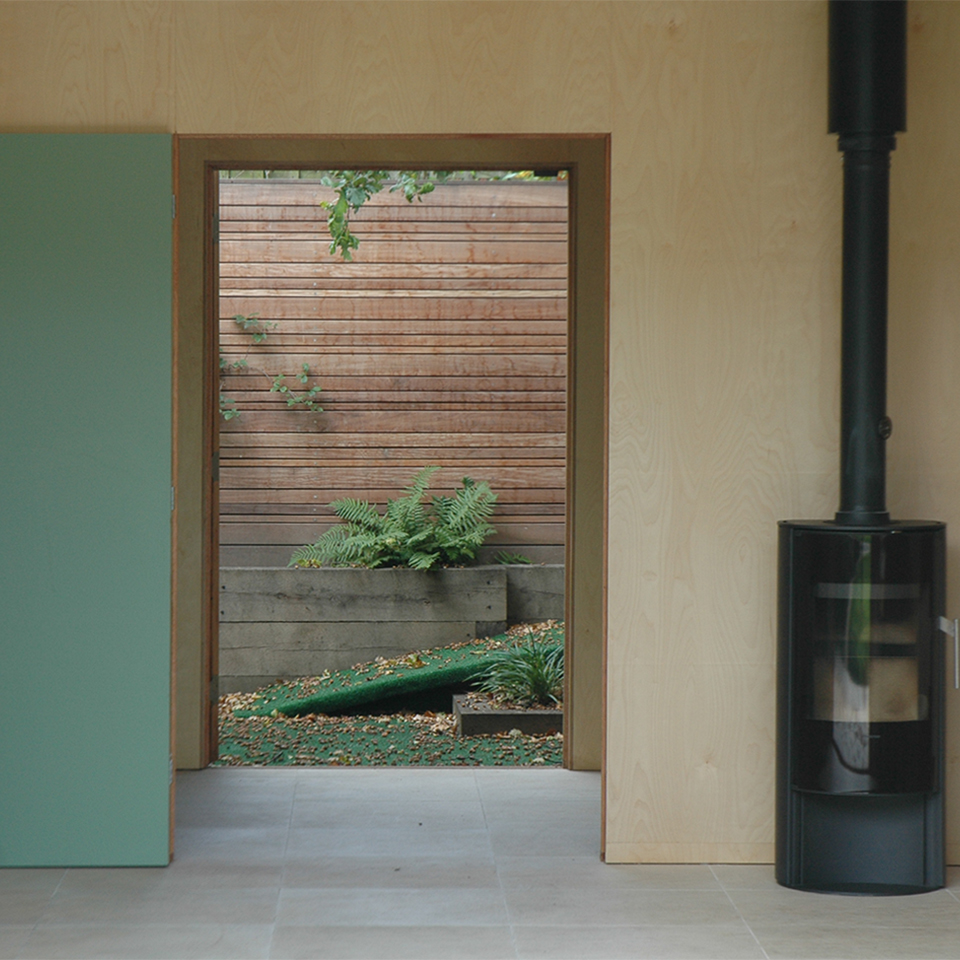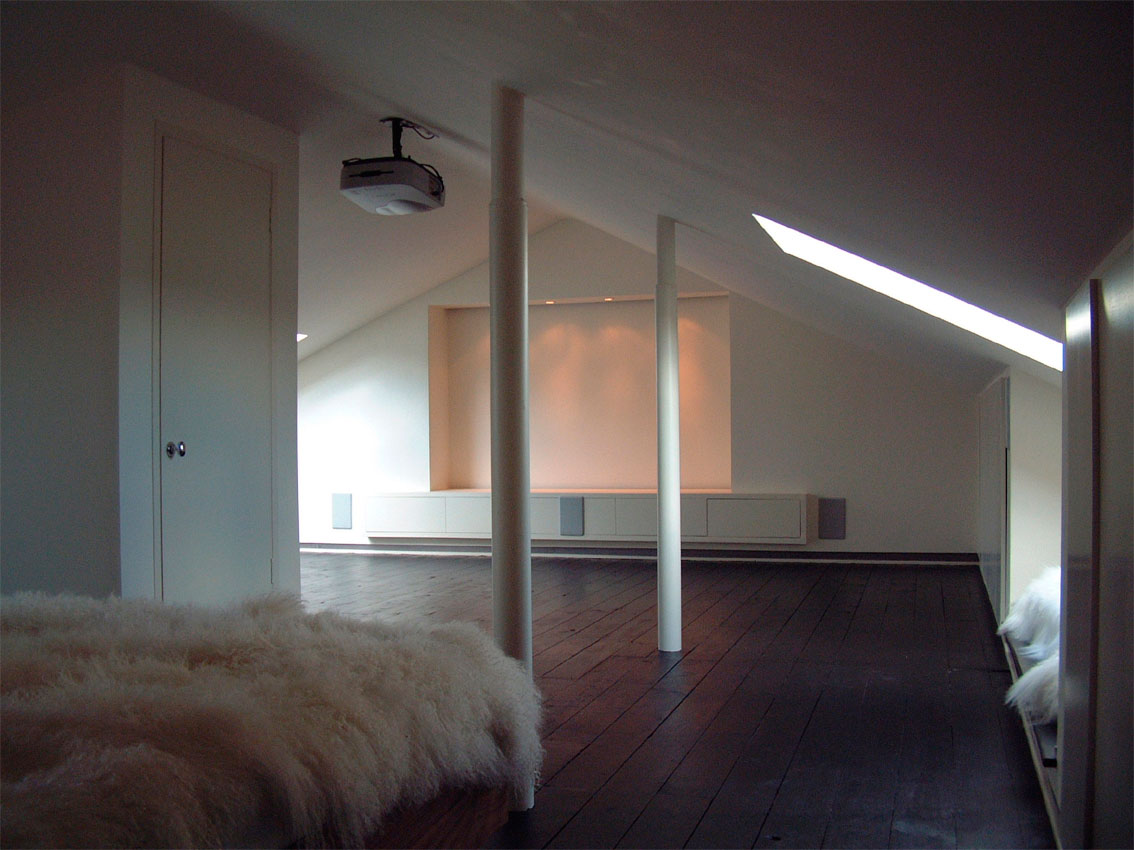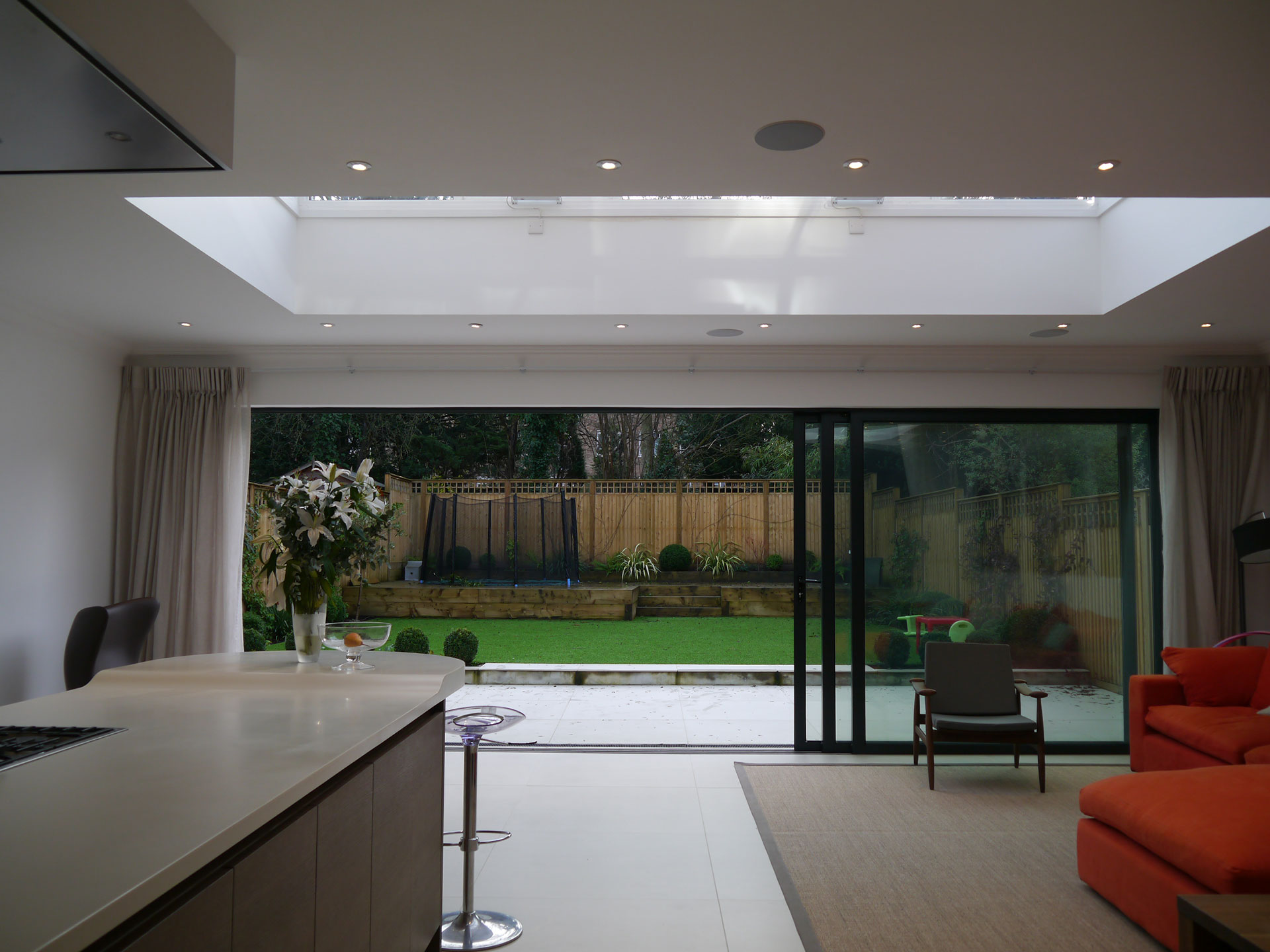chris hampson + studio6architects was formed in 2019, providing bespoke
architecture and interiors design practice
services on smaller and residential projects.
This builds on the success of Hampson Williams and HWK architects. The high profile success of projects such as Glass & Timber Houses in south London, which featured in Grand Designs and won an RIBA award in 2012, Hill House, Shoreham, Kent which won an RIBA Award and 142 Bermondsey Street, near London Bridge, which achieved a Sunday Times Award, an RICS Award and an RIBA shortlisting. The project for The Finchley Charities at Thackrah Close in London N2 was the Winner of Excellence and Inspiration at the Alms House Association Awards and was shortlisted for the Prince Charles Patron’s Award, as well as an Inside Housing award for Best Inclusive Development in 2018. Recently, working with Vastu Interiors, the house in Elm Park Road, Chelsea received an Interior Design International Property Award.
We work very hard with our clients to provide great designs, solve problems and have a good eye on the time and the money. There is no house style - we listen to our clients, take the brief and create a bespoke design.
Chris Hampson has been on RIBA Council for London since 2009 and Chair of London from 2014 to 2016. He is a qualified project manager.
This builds on the success of Hampson Williams and HWK architects. The high profile success of projects such as Glass & Timber Houses in south London, which featured in Grand Designs and won an RIBA award in 2012, Hill House, Shoreham, Kent which won an RIBA Award and 142 Bermondsey Street, near London Bridge, which achieved a Sunday Times Award, an RICS Award and an RIBA shortlisting. The project for The Finchley Charities at Thackrah Close in London N2 was the Winner of Excellence and Inspiration at the Alms House Association Awards and was shortlisted for the Prince Charles Patron’s Award, as well as an Inside Housing award for Best Inclusive Development in 2018. Recently, working with Vastu Interiors, the house in Elm Park Road, Chelsea received an Interior Design International Property Award.
We work very hard with our clients to provide great designs, solve problems and have a good eye on the time and the money. There is no house style - we listen to our clients, take the brief and create a bespoke design.
Chris Hampson has been on RIBA Council for London since 2009 and Chair of London from 2014 to 2016. He is a qualified project manager.
142 Bermondsey St
London SE1- UK
2015
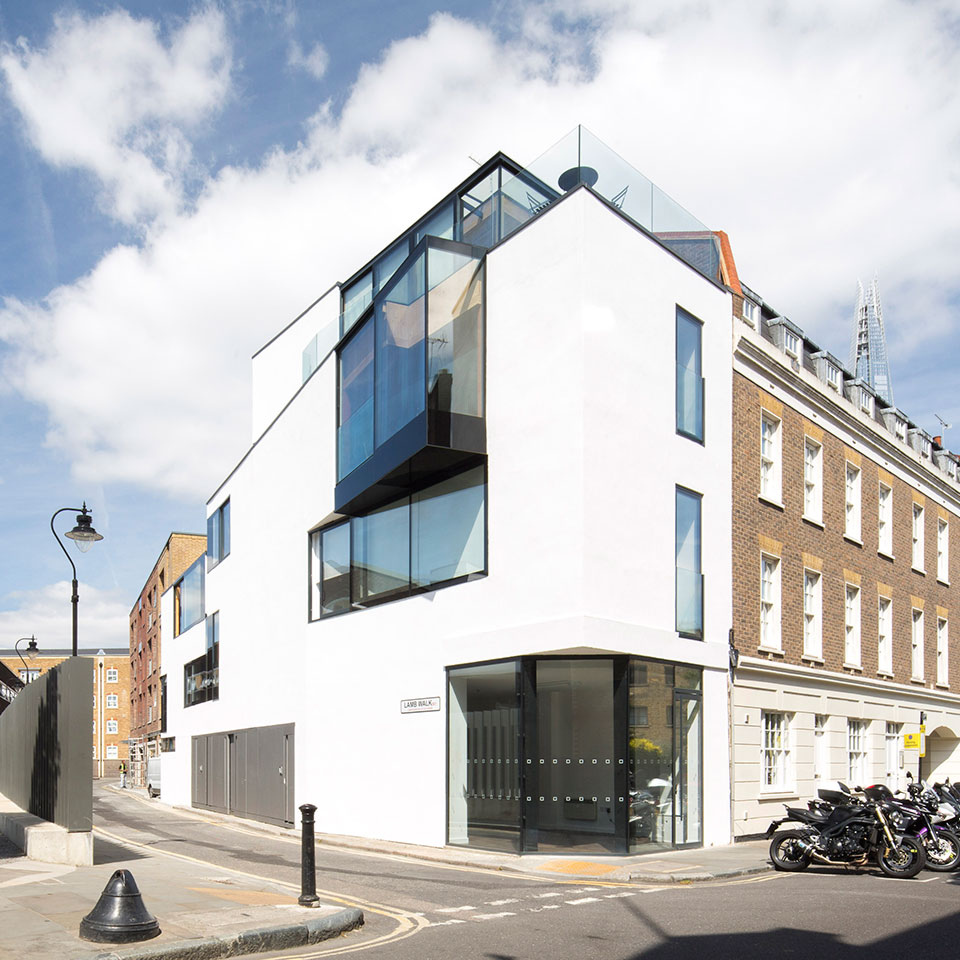
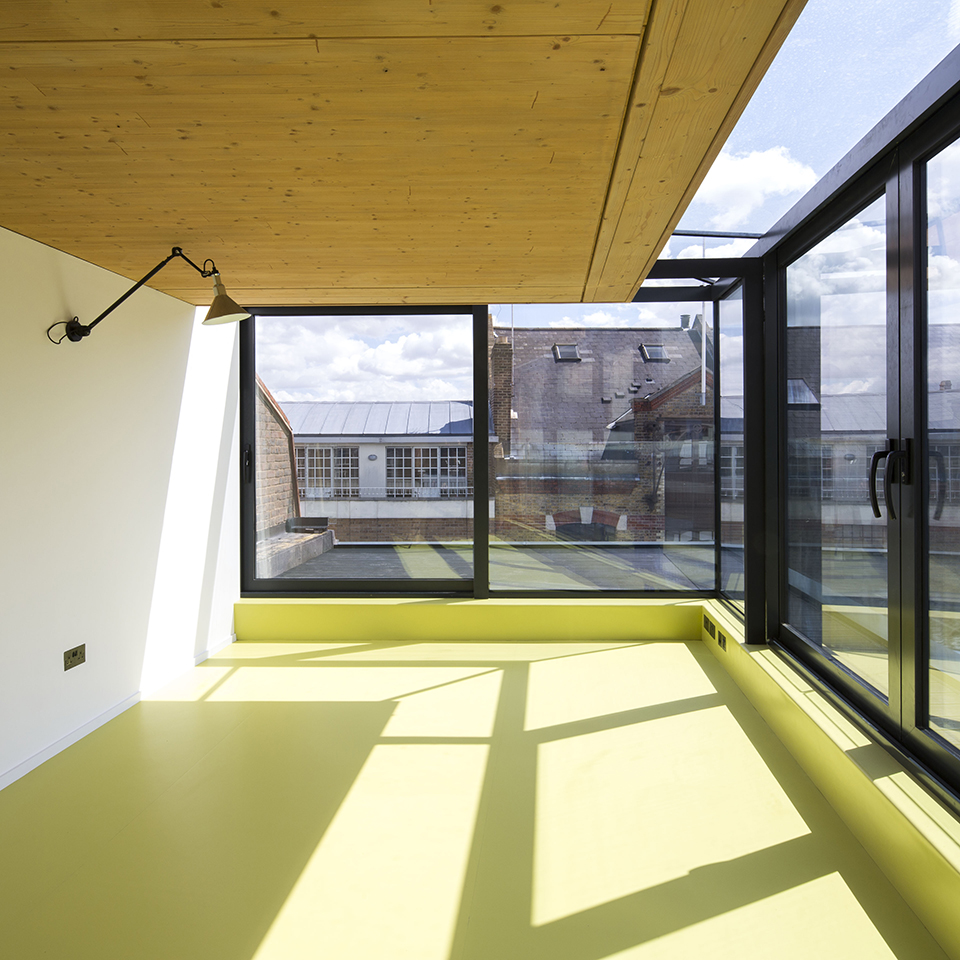

The practice was commissioned to refurbish
and extend an unlisted post war building, located in the Bermondsey Street
Conservation area, London Borough of Southwark.
The client, a well known and loved community figure, has lived in the area all her life, and at 142 Bermondsey Street for over 20 years. She commissioned the project to breathe a new lease of life into the fast crumbling building that she loved and a new home.
The design proposal was to create a bookend to a historic street; it fused the old and the new, using the existing building as a starting point and then wrapping the building around the corner to benefit from open views and south facing sunlight. The form was developed through a scale study analysis of Bermondsey Street and Lamb Walk, whilst maximising the envelope, and maintaining BRE daylight-sunlight to a ground floor residential unit at 140 Bermondsey Street.
Externally there is a simple white box industrial appearance with robust materials and clean lines. Internally, these clean lines are continued and planes are created, but using softer natural timber alongside industrial materials giving a more residential feel and warmth to the spaces.
The extension and the new build extensions were all constructed using light weight Cross Laminated Timber (CLT) allowing the super structure to be erected within two weeks. This creative cross discipline collaboration with timber engineers Eurban and structural engineers Webb Yates minimised the programme and the requirement for road closure on the tight urban site. This construction technology also allowed the existing foundations to be used - reducing the requirement for archaeological investigations on the sensitive medieval site. The CLT acted both structurally, thermally and internally as a warm durable finished product.
The building has received very positive press and has won awards
Awards
RIBA London Regions Award - Shortlisted 2015
British Homes Sunday Times Award - Winner 2016
RICS Awards - Highly Commended / Special Prize 2017
The client, a well known and loved community figure, has lived in the area all her life, and at 142 Bermondsey Street for over 20 years. She commissioned the project to breathe a new lease of life into the fast crumbling building that she loved and a new home.
The design proposal was to create a bookend to a historic street; it fused the old and the new, using the existing building as a starting point and then wrapping the building around the corner to benefit from open views and south facing sunlight. The form was developed through a scale study analysis of Bermondsey Street and Lamb Walk, whilst maximising the envelope, and maintaining BRE daylight-sunlight to a ground floor residential unit at 140 Bermondsey Street.
Externally there is a simple white box industrial appearance with robust materials and clean lines. Internally, these clean lines are continued and planes are created, but using softer natural timber alongside industrial materials giving a more residential feel and warmth to the spaces.
The extension and the new build extensions were all constructed using light weight Cross Laminated Timber (CLT) allowing the super structure to be erected within two weeks. This creative cross discipline collaboration with timber engineers Eurban and structural engineers Webb Yates minimised the programme and the requirement for road closure on the tight urban site. This construction technology also allowed the existing foundations to be used - reducing the requirement for archaeological investigations on the sensitive medieval site. The CLT acted both structurally, thermally and internally as a warm durable finished product.
The building has received very positive press and has won awards
Awards
RIBA London Regions Award - Shortlisted 2015
British Homes Sunday Times Award - Winner 2016
RICS Awards - Highly Commended / Special Prize 2017
Village East, Bermondsey St
London SE1- UK
2000

Village East was a refurbishment and change of use of an existing buling and a contemporary infill
development located within the London Borough of Southwark and the Bermondsey
Street Conservation Area. The scheme provided commercial at ground floor and
residential units on the upper floors. The frontage design echoed the façade
lines of each of the adjacent buildings, with references found within the
glazing bars and inset balconies. The materials looked to contrast with the London
Stock Brick and comprised of a glazed and eternit façade.
Holt Close
London N10- UK
2014



Hampson Williams were commissioned to externally
and internally remodel a 1970’s house on the edge of Highgate Wood, North London.
The project became a design exercise in reconfiguring the building and its relationship with the surrounding woodland.
The existing house had a blank facade which addressed the woodland, the project effectively removed this wall added a ‘house onto the side of the house’. This move opened up the spaces and allowed South and West sunlight to filter in.
Externally the house needed to blend in with its natural environment; this led to the choice of vertical timber of differing widths and zinc cladding.
The project became a design exercise in reconfiguring the building and its relationship with the surrounding woodland.
The existing house had a blank facade which addressed the woodland, the project effectively removed this wall added a ‘house onto the side of the house’. This move opened up the spaces and allowed South and West sunlight to filter in.
Externally the house needed to blend in with its natural environment; this led to the choice of vertical timber of differing widths and zinc cladding.
Thackrah Close
London N2- UK
2018

In 2012 The Finchley
Charities commissioned Hampson William Architecture to provide a design for
additional sheltered housing accommodation at their existing site at Wilmot
Close, East Finchley, in North London. There
was a housing need for further one bedroom units for applicants on their
waiting list. Space for the potential development was identified in the
North-West Corner of the existing land. This was an underutilised sloping
grassed area which was an ideal spot for the new development for further accommodation
for older adults in need of Sheltered Housing.
The land backed onto the Font Hill Estate to the west and Allotments to
the north, beyond which lay the London North Circular Road.
The proximity of the North Circular was a significant issue, but it was felt that a suitably designed building could overcome the issues of noise and air pollution and indeed improve the amenity of residents in existing units.
The charity’s vision and design brief was, firstly, to achieve a high quality adaptable and sustainable design that would provide affordable and accessible lifelong homes equipped with modern telecare for its residents in order to meet current and future care and support needs.
Secondly, the design had to be robust, low maintenance, a highly energy efficient building with good security and fully compliant with the latest fire regulations.
The third criteria was that the design had to be tranquil, feel spacious and full of light and be a joyful place to live. The new homes had to integrate into the existing community with all the positive feelings of health and wellbeing, support, friendship and doing things together.
The challenge was to create homes for the over 55’s with access to a new garden area encouraging residents to spend time talking and meeting outside their personal homes.
In terms of physical appearance, design cues were taken from the original Almshouses, which still exist at the South of the site. These traditional Arts and Crafts buildings have a reassuring, traditional quality and are perceived as appropriate for the use envisaged. Their use of traditional materials which exude a quality of workmanship was seen as benchmark against which any new design would be considered.
This is of course a 21st century solution and the design principles of this building form have been stripped back and reinterpreted in a more contemporary style. First Floor accommodation is wrapped in a slate roof and punching through it are zinc metal clad dormer windows. These hard roofing materials contrast with the ground floor walls that are clad in traditional timber shingles which will soften and grey over time, creating a very domestic interface to the courtyard. Materials are robust, and need very little maintenance. The timber is a warm natural material which gives a fantastic feeling of wellbeing. The solution harmonises with the existing structures and the surrounding landscape. The courtyard uses timber planters, the edges set at sitting level, the planters have a mixture of general plants and herbs and space to grow residents plants aided by the Residents Garden Club. The planting areas have been designed around the three retained trees which give a shaded canopy.
The scheme was therefore designed in a basic L form with four blocks, two storey to match the height of existing adjacent homes, each block with four units, acting as a shield to the rest of the existing site, creating a landscaped courtyard with both private and communal areas, protected from the noise of the busy trunk road. The rear of this block was designed to be as acoustically robust as possible, with thick masonry walls and uprated acoustic glazing. All the living and bedroom spaces face onto the landscaped south facing courtyard and the ground floor residents have direct access into the courtyard.
All units follow a similar floor plan with large bedrooms and ample contemporary shower rooms. All are wheelchair accessible on the ground floor. There are two slightly larger homes which are adaptable wheelchair accessible units. Kitchens are semi open plan to the living room, which allows light to spill into the units from both sides. This light is filtered through to the inner hallway by integrating clear story fanlights above all internal doors. The living, dining, kitchen areas are large and the window size has been increased on the courtyard side in order to maximise light and enhance the views across the lushly planted courtyard. Each ground floor home has a private level access entrance door to the gardens.
The gardens have been designed very carefully to include high quality lighting design to reinforce the feeling of living in a safe and secure environment, the planter design is timber and paving is light in colour using simple robust materials, all of these improve and enhance health and wellbeing. Great thought and care was taken by the design team to ensure the external grounds and gardens provided access for all residents to use and enjoy, importantly including residents with limited mobility, wheelchair users and residents with sensory impairments.
The result of all of this is a beautifully crafted building and gardens providing a delightful place to live in an existing community. The Almshouses have been reinterpreted and now have all the benefits of the 21st century.
The building has received very positive coverage and has won Best Inclusive Development at the Inside Housing Development Awards 2018 and Alms House Association Award for Excellence and Inspiration 2019 and on the shortlist for the Almshouse Patron’s Award. 2019.
The proximity of the North Circular was a significant issue, but it was felt that a suitably designed building could overcome the issues of noise and air pollution and indeed improve the amenity of residents in existing units.
The charity’s vision and design brief was, firstly, to achieve a high quality adaptable and sustainable design that would provide affordable and accessible lifelong homes equipped with modern telecare for its residents in order to meet current and future care and support needs.
Secondly, the design had to be robust, low maintenance, a highly energy efficient building with good security and fully compliant with the latest fire regulations.
The third criteria was that the design had to be tranquil, feel spacious and full of light and be a joyful place to live. The new homes had to integrate into the existing community with all the positive feelings of health and wellbeing, support, friendship and doing things together.
The challenge was to create homes for the over 55’s with access to a new garden area encouraging residents to spend time talking and meeting outside their personal homes.
In terms of physical appearance, design cues were taken from the original Almshouses, which still exist at the South of the site. These traditional Arts and Crafts buildings have a reassuring, traditional quality and are perceived as appropriate for the use envisaged. Their use of traditional materials which exude a quality of workmanship was seen as benchmark against which any new design would be considered.
This is of course a 21st century solution and the design principles of this building form have been stripped back and reinterpreted in a more contemporary style. First Floor accommodation is wrapped in a slate roof and punching through it are zinc metal clad dormer windows. These hard roofing materials contrast with the ground floor walls that are clad in traditional timber shingles which will soften and grey over time, creating a very domestic interface to the courtyard. Materials are robust, and need very little maintenance. The timber is a warm natural material which gives a fantastic feeling of wellbeing. The solution harmonises with the existing structures and the surrounding landscape. The courtyard uses timber planters, the edges set at sitting level, the planters have a mixture of general plants and herbs and space to grow residents plants aided by the Residents Garden Club. The planting areas have been designed around the three retained trees which give a shaded canopy.
The scheme was therefore designed in a basic L form with four blocks, two storey to match the height of existing adjacent homes, each block with four units, acting as a shield to the rest of the existing site, creating a landscaped courtyard with both private and communal areas, protected from the noise of the busy trunk road. The rear of this block was designed to be as acoustically robust as possible, with thick masonry walls and uprated acoustic glazing. All the living and bedroom spaces face onto the landscaped south facing courtyard and the ground floor residents have direct access into the courtyard.
All units follow a similar floor plan with large bedrooms and ample contemporary shower rooms. All are wheelchair accessible on the ground floor. There are two slightly larger homes which are adaptable wheelchair accessible units. Kitchens are semi open plan to the living room, which allows light to spill into the units from both sides. This light is filtered through to the inner hallway by integrating clear story fanlights above all internal doors. The living, dining, kitchen areas are large and the window size has been increased on the courtyard side in order to maximise light and enhance the views across the lushly planted courtyard. Each ground floor home has a private level access entrance door to the gardens.
The gardens have been designed very carefully to include high quality lighting design to reinforce the feeling of living in a safe and secure environment, the planter design is timber and paving is light in colour using simple robust materials, all of these improve and enhance health and wellbeing. Great thought and care was taken by the design team to ensure the external grounds and gardens provided access for all residents to use and enjoy, importantly including residents with limited mobility, wheelchair users and residents with sensory impairments.
The result of all of this is a beautifully crafted building and gardens providing a delightful place to live in an existing community. The Almshouses have been reinterpreted and now have all the benefits of the 21st century.
The building has received very positive coverage and has won Best Inclusive Development at the Inside Housing Development Awards 2018 and Alms House Association Award for Excellence and Inspiration 2019 and on the shortlist for the Almshouse Patron’s Award. 2019.




